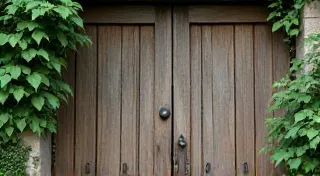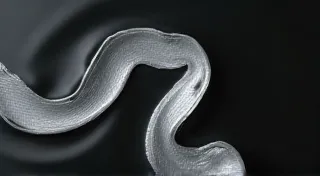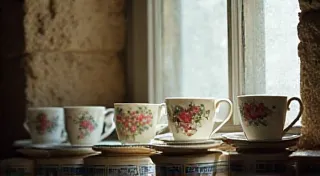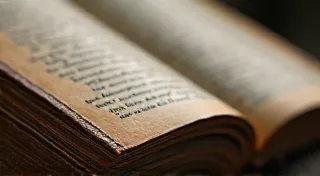Unveiling the Hidden Language of Herbs: A Pet's Intuition
There’s a certain melancholy beauty in an antique accordion. It's a physical manifestation of a longing, a history held within bellows and keys. My grandfather, a quiet man of few words, owned one. I remember him playing it during summer evenings, the music weaving through the twilight, a soundtrack to fireflies and childhood dreams. He didn’t teach me to play, but he instilled in me a profound respect for handcrafted instruments, for the artistry and patience required to create something that resonates with the soul. And that same respect, that sense of connection to something old and knowing, is what I feel when I consider the ancient practice of herbal remedies for our pets.
We, as modern humans, often lose touch with the deep, instinctive knowledge our ancestors possessed. We rely on scientific explanations, clinical trials, and lab coats. And while science certainly has its place, there's a quiet wisdom that resides within the animal kingdom – a knowing that bypasses intellect and speaks directly to the body's innate needs. Think about a rabbit instinctively seeking out dandelion leaves, or a dog pawing at a patch of chamomile. They aren't reading textbooks on phytochemistry; they're listening to a language older than words – the language of herbs.

The Accordion's Echo: Recognizing Intuition
Consider the intricate workings of an accordion. Each reed, meticulously crafted and tuned, contributes to the overall sound. A slight imperfection, a missed adjustment, and the music suffers. Similarly, a pet’s well-being is a delicate balance – a symphony of internal systems. When that harmony is disrupted, they don't always express their distress in a way we readily understand. They might exhibit subtle changes in behavior, a loss of appetite, or increased anxiety.
Just as a skilled accordion restorer instinctively knows which reed to replace, which bellows to reinforce, based on feel and sound, we can learn to listen to our pets’ unspoken needs. This isn't about diagnosing medical conditions; it's about observing, connecting, and offering gentle support. Herbal remedies, when used responsibly and with consideration, can be one powerful tool in that supportive role. Many find that integrating herbal infusions into daily rituals can be a wonderful and proactive way to support their pet's overall wellness – a concept explored further in Beyond the Bowl: Integrating Herbal Infusions into Daily Rituals.
Herbal Wisdom: A Pet's Ancient Guide
The concept of animals understanding herbs isn't new. Traditional cultures around the world have long observed and utilized animals’ choices when foraging. Indigenous communities have recognized which plants animals gravitate towards, using this information to identify beneficial herbs. The connection isn’t about a complex cognitive process; it’s a deeply ingrained physiological response. Animals often have a heightened sensitivity to plant compounds, a sort of intuitive radar for what their bodies need.
For instance, a dog might consistently seek out plantain leaves (not the culinary variety!), drawn to their soothing properties for minor skin irritations or insect bites. Cats, too, exhibit similar preferences – often showing an affinity for catnip (Nepeta cataria), but also potentially benefiting from the calming effects of chamomile or valerian root, though always with careful dosage consideration. Rabbits, famed for their selective grazing, often seek out herbs like dandelion and parsley, rich in vitamins and minerals crucial for their digestive health. These moments of quiet renewal and connection with nature, so evident in rabbits' instinctive choices, are beautifully captured in Rabbits and the Silvered Stream: A Quiet Ritual of Renewal.
It’s important to stress that this isn’t a free-for-all. Not all herbs are safe for pets. Many common garden plants are toxic, and misidentification can have serious consequences. Always research thoroughly, consult with a holistic veterinarian experienced in herbal medicine, and introduce new herbs gradually, observing for any adverse reactions. Just as a novice restorer might damage an accordion with improper cleaning techniques, we must approach herbal remedies with knowledge and caution. The aging process can also put a strain on a pet's kidneys, and maintaining their health through appropriate herbal support is crucial; resources like Ethereal Infusions: Supporting Kidney Health in Senior Pets offer valuable insights for those specific needs.
Crafting a Safe and Beneficial Blend: Respect for Ingredients
Creating tea blends for pets is a delicate art. It’s not just about mixing ingredients; it’s about understanding their individual properties and how they interact with each other. Think of a master accordion maker meticulously selecting the wood for the body, the leather for the bellows – each material chosen for its unique acoustic properties and durability. We must apply the same level of discernment when selecting herbs for our pets.
For dogs, chamomile can be wonderfully calming, particularly for anxious or restless pups. Ginger can aid digestion and alleviate nausea. For cats, a small amount of catnip can provide enrichment and relaxation. For rabbits, dandelion leaf and parsley are excellent choices for providing essential nutrients. However, the *quantity* is crucial. A rabbit’s digestive system, for example, is particularly sensitive, and too much parsley can be detrimental. Similarly, the potency of herbs can vary depending on growing conditions and harvesting techniques.

Beyond the Recipe: Observing and Adapting
The beauty of this ancient practice lies not just in the recipes themselves, but in the ongoing relationship between the pet owner and their animal companion. Just as an accordion restorer learns to “hear” the instrument’s subtle cues, we must learn to observe our pets’ responses to herbal remedies. A slight change in behavior, a subtle shift in appetite – these are all valuable pieces of information.
There's no one-size-fits-all solution. What works wonders for one dog might have no effect on another. A rabbit's herb preferences might change seasonally, reflecting their evolving nutritional needs. The key is to be attentive, adaptable, and trusting of your intuition. Remember, you know your pet better than anyone else. Even scents can play a role in supporting wellness; exploring aromatherapy can offer further avenues for connection and relief, as discussed in The Serendipity of Scent: Decoding Aromatherapy's Role in Pet Wellness.
Think about the meticulous process of restoring an old accordion. It's not about imposing a new identity; it's about revealing the inherent beauty and functionality that already exists. Similarly, our role as pet owners isn’t to “fix” our animals; it’s to support their innate healing abilities, to provide them with the resources they need to thrive, and to listen – truly listen – to the subtle language of their bodies.
This connection – this shared wisdom – is a timeless treasure, a legacy passed down through generations of animals and humans living in harmony with nature. And just as the music of an antique accordion resonates with the echoes of the past, the ancient practice of herbal remedies for pets can enrich our lives and deepen our bond with the creatures we love.






